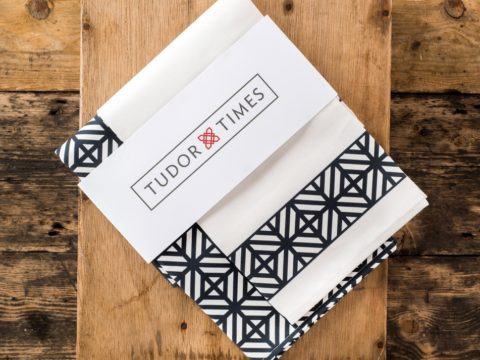John Dudley: Life Story
Chapter 1: Son of a Traitor
The Dudleys, although descended, like most of the Tudor aristocracy, from Edward I, were not wealthy. John Dudley was the son of Edmund Dudley, Henry VII’s attorney, whose service to the King won him Elizabeth Grey, the daughter of a viscount, as his second wife. Edmund and Elizabeth had three sons, of whom John was the eldest.
Edmund was one of Henry VII’s most trusted advisors, and, together with his colleague, Sir Richard Empson, Chancellor of the Duchy of Lancaster, worked to enhance Crown income by every conceivable method. Unsurprisingly, this was resented, particularly by the nobles who were subject to draconian financial punishments for any perceived infringement of the law, or royal prerogatives.
When Henry VIII became King in April 1509, Edmund Dudley and Richard Empson were immediately arrested and imprisoned. The Dudleys’ home in Candlewick Street, London, was stripped of all jewels, plate and good, which were forfeit to the King and later given to Sir Henry Marney, John Colet and others. Edmund was executed for treason in August 1510.
Edmund left a will, in which he divided those of his lands that were in trust, as the law permitted. He granted various parcels of land in the Isle of Wight, Sussex, Dorset, Lancashire and Cheshire to his wife for life, to be followed by John and his heirs, and then his other sons and daughter and their heirs. Other lands were designated for his wife for life then to his younger children.
John Dudley’s wardship was granted to Sir Edward Guilford. The Guilford family were in high favour at court. Sir Edward’s step-mother, Joan Guilford, née Vaux, was Lady Mistress to Henry’s sister, Mary, and accompanied her to France in 1514. Sir Edward’s half-brother, Sir Henry Guilford, was a close friend of the King. On Sir Edward’s request the attainder against John’s father was reversed in the Parliament of February – April 1512, enabling him to inherit his father’s property and removing the stain of treason from John and his brothers. The Act that restored Dudley clarified that his restoration was not to prejudice the rights of his mother or her second husband to any lands she held in jointure or dower.
Dudley’s mother, Elizabeth, had remarried before November 1511. This time to a much more exalted figure – Sir Arthur Plantagenet, the illegitimate son of Edward IV, and thus half-uncle to the King. The marriage produced three half-sisters for Dudley – Frances, Bridget and Elizabeth Plantagenet. In 1519, Elizabeth became Baroness Lisle in her own right. As was customary, her husband took the title, but, as her eldest son, John could be confident of inheriting the barony in due course.
Dudley reached his majority in about 1523 and entered public life. His first role was military, and he became, and remained, a successful soldier. In 1523, England, in alliance with the Emperor Charles V, had invaded France. The original plan was for a four-pronged attack on France from different directions and the Duke of Suffolk led the English attach through Picardy.
In Suffolk’s army was Sir Edward Guilford, as Marshal of the Spears of Calais, and Dudley accompanied him as lieutenant. Initially, the campaign was successful. Dudley was knighted on the field by Suffolk for courage in crossing the Somme and the army began to march on Paris. However, like many armies before and since, lack of supplies and the mud and rain of northern France hindered progress. The other attacks promised by the Emperor were not forthcoming, and the English were obliged to retreat.
Dudley showed off his new found military skills in mock-battle instead, and gained a reputation as an excellent jouster. Henry VIII was still regularly taking part in jousts and tourneys and skill in them was a route to royal favour. Around this period, Dudley married Jane Guilford, Sir Edward’s daughter. The marriage was to prove happy and fruitful. They had at least 11 children, of whom seven grew up.
Sir John Dudley
Family Tree




